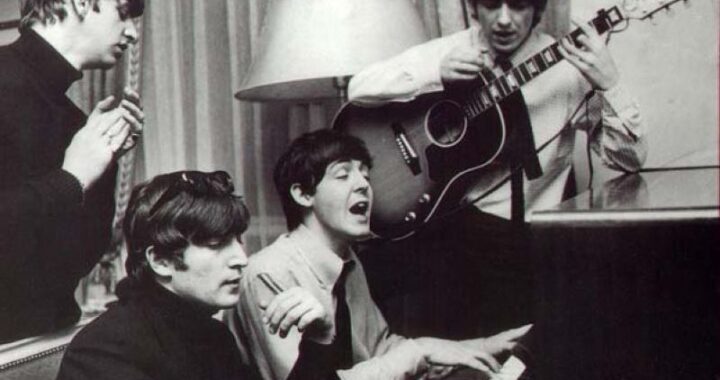 “The Essential Secrets of Songwriting” eBook bundle includes “Writing a Song From a Chord Progression”. Discover the secrets to writing songs that start with getting a chord progression working.
“The Essential Secrets of Songwriting” eBook bundle includes “Writing a Song From a Chord Progression”. Discover the secrets to writing songs that start with getting a chord progression working.
The mood that an audience picks up from a song, at least initially, comes mainly from the chord choices the songwriter makes. And the biggest influencer in that regard is whether you choose to write a song in a major or minor key.
And since major and minor choices both have such a strong effect on which way the mood of a song swings, it can be a powerful songwriting tool. You can move from causing your listeners to pick up feelings of pensiveness or nostalgia, to suddenly feeling light hearted and cheerful, and then everything in between.
“I’m Only Sleeping” (Lennon & McCartney, written primarily by Lennon) makes use of this technique of moving from minor to major and back again, from the key of Eb minor, quickly moving to Gb major, then back to Eb minor again.
I show the chords and key choices below in the simplified key of E minor to G major:

In musical terminology, the choice of major or minor is called “quality.” Switching key quality typically doesn’t happen so quickly as we hear in “I’m Only Sleeping.” It’s more common to devote an entire verse to, let’s say, a minor key, using the very end of the verse to create a transition to a major key choice for the chorus.
If you’d like to experiment with moving quickly between major and minor, you can make the figuring out a bit easier if you do the following:
- Choose a major key. (Example: G major)
- Play/write out the seven chords that naturally exist in that key. (Example: G, Am, Bm, C, D, Em, F#dim). Note: Simply identify the seven notes that make up the major scale of your chosen key, then build a chord above each note.
- Find the sixth chord in that list (Em), and play a natural minor scale starting on that note. (Example: E-F#-G-A-B-C-D-E) You’ve just written out the scale for the relative minor key.
- Play/write out the seven chords that naturally exist in that key. (Example: Em, F#dim, G, Am, Bm (or B), C, D) Note: The note based on B could be Bm, but often in a minor key the chord built on the fifth note is modified to be a major chord. It’s why B7 happens in “I’m Only Sleeping”)
You’ve now got a list of chords from G major and a separate list of chords from E minor. And you’ll notice something right away: many of the chords exist in both lists. Those common chords can be used to easily move from minor to major and back again.
Using the sample keys from the list above, here are a few progressions you can experiment with that allow you to move quickly from minor to major:
- G Am Em Am C G Am B7 Em (Starts in G major, ends in E minor)
- Em Am B7 C G D Em D7 G (Starts in E minor, ends in G major)
- G D/F# Em B Em Am B7 Em (Starts in G major, ends in E minor)
- Em B7 Em G Am D7 G (Starts in E minor, ends in G major)
As you experiment, you can try shortening the journey from one key quality to the other, and back again, as Lennon did with “I’m Only Sleeping.” There are, of course, no rules about how long you need to stay in one before moving to the next. That part’s up to your own musical judgment.
 Written by Gary Ewer. Follow Gary on Twitter.
Written by Gary Ewer. Follow Gary on Twitter.
 Looking for lists of progressions you can use in your own songs? “The Essential Secrets of Songwriting” eBook Bundle has 2 main collections, plus eBooks on how to harmonize your own melodies, and more.
Looking for lists of progressions you can use in your own songs? “The Essential Secrets of Songwriting” eBook Bundle has 2 main collections, plus eBooks on how to harmonize your own melodies, and more.










